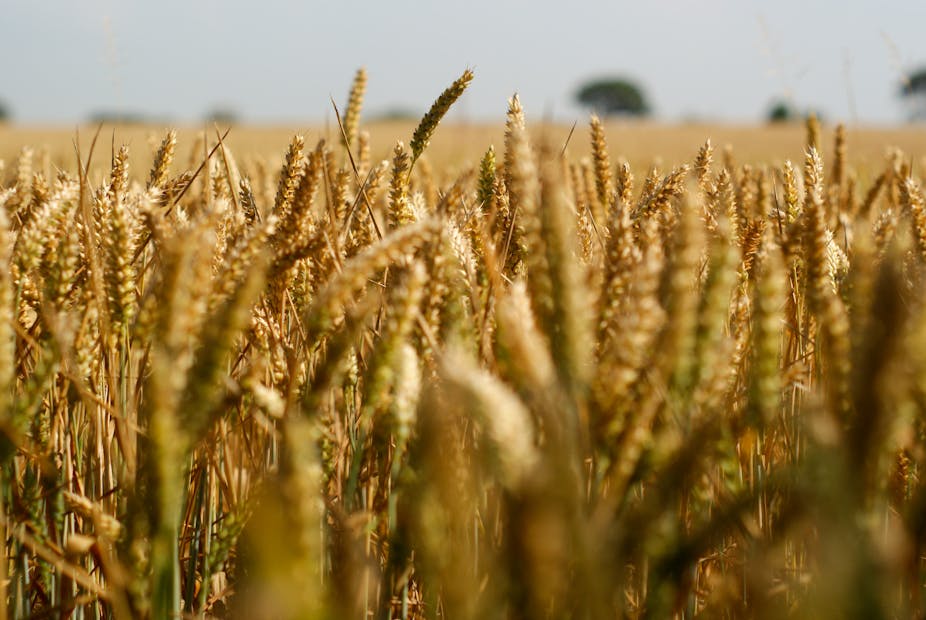Coal seam gas has been touted by some as the answer to our addiction to dirty coal. It’s marketed as a “transition fuel” that will ween us off fossil fuels as we move to renewable energy.
But the process of drilling for coal seam gas poses a significant threat to another environmental challenge of the 21st century - food security.
Our thirst for less emissions-intensive fuel is placing future generations at risk as we dice with some of the most valuable agricultural land in the world.
A tempting prospect
Coal seam gas is a form of “natural gas” (about 80% methane) and it will be exported as liquefied natural gas (LNG) for export. Advocates suggest using it for base load power generation while coal is phased out.
But there’s controversy surrounding emissions from the gas. There is also the potential damage to the environment caused by the industry.
Governments at both the state and federal level are in a catch-up phase to amend existing laws, regulations and approvals for exploration and exploitation. They’re trying to rein in what many regard as the too-rapid development of an industry we know too little about.
International capital is buying into the bonanza with future investment estimated at $80bn for Surat Basin CSG alone. So state governments with difficult bottom lines (think recent natural disasters in Queensland) are seeing CSG industry development in a very favourable light.
The lay of the land
Australia is a major exporter of grain, shipping out enough to feed around 60 million people. Much production occurs on land that is also good for CSG extraction.
Prompted by community concerns about the loss of prime agricultural land to CSG mining, and industry lobbying to minimise restrictions on their access to these very lands, the Queensland Government released the “Proposed criteria for identifying strategic cropping land to be used in drafting the new strategic cropping land legislation”.
The developments in NSW - particularly around coal mining and CSG development planned for the Liverpool Plains and Hunter River valley - are not as advanced as those in the Surat Basin in Queensland.
The Darling Downs and Liverpool plains with their heavy clay soils, reliable rainfall and extensive underground water resources are among the most productive agricultural lands in the world.
These soils store enough water to tide crops over in times of low rainfall.
They have inherent soil fertility and soil organic matter that underpins their exceptional and reliable productivity.
Their natural topography enables laser levelling over large areas which with near universal adoption of conservation agriculture (minimum tillage, stubble retention, crop rotations) reduces erosion and conserves moisture, nutrients and carbon.
What to do with the water?
Farmers in the Surat Basin and Liverpool Plains have signed up to quite severe underground water use restrictions to enable sustainable supply.
The CSG industry both uses and produces water and is not subject to the same compulsory rules on sustainable water extraction as farmers.
The initial phase of extraction requires water to set up the drilling and bore operation systems. This will come from shallow aquifers and will compete with farmers and towns.
As part of the process, large volumes of water must be pumped through the coal seams. The water coming out the other end is often too salty for use in agriculture.
So what to do with it?
The Queensland Government has said that waste water cannot be held in evaporation ponds to concentrate the salt and enable its removal.
The companies involved are exploring desalination through reverse osmosis: this requires a lot of energy. It also leaves an unknown volume of very salty brine residue for which disposal methods have not yet been developed (or regulated).
The water can perhaps be injected into shallower aquifers and be useful for future crop production. But methods to do this are still being modelled by the Queensland Department of Environment and Resource Management’s Coal Seam Gas Water Feasability Study.
Another unresolved issue is the possibility of existing aquifers being contaminated with CSG water. This has already occurred in places. Such cross contamination can lead to CSG emanating from farmers’ bores used for irrigation and household use.
Certain mixtures of CSG with air can be quite explosive and people have been warned in the Surat Basin that they should leave their households while such an event is managed.
There is no requirement for CSG companies to explain in advance how they might deal with the contamination of aquifers.
Securing our soil
CSG wells take up about two hectares of land, and require access roads and underground pipes for the gas collection alongside them.
Although this adds up to a rather large loss of land with more than 30,000 wells, the major problem faced by farmers is that a CSG well placed in their field can disrupt the water flow.
Roads are a major problem as they disturb the flood erosion control that the farmers have developed and signed up to with government.
Soils are not infinitely deep and erosion is a major problem faced in agricultural production. It can take thousands of years to replace the most fertile topsoil that can be lost in just one erosion event.
An option is to locate CSG wells where they will not accentuate erosion and drill at an angle to the CSG source. It’s more costly for sure, but it’s much less damaging to farm practice and the environment.
Once destroyed by compaction, once eroded or mined, these soils cannot be brought back to production.
Some of the best cropping lands in Australia and the livelihoods of some of the best farmers in the world and their considerable food production are at stake: surely, the precautionary principle should apply here.
After all, the CSG industry will not last much beyond the next 30-40 years, and the world’s food supply needs to extend much longer than this.

